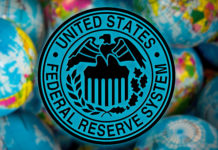After a long period of bad news on the coronavirus front, we have finally seen more positive developments lately. This is broadly in line with the view we put out in late March in Research COVID-19: Closer to the peak of bad news , 25 March 2020. All countries in Europe as well as the US seem to have topped out when it comes to the number of new daily infections and the development is validated by a peak in new deaths as well. Some countries are further back in the virus cycle, such as Russia and some Latin American countries. But overall, the worst seems to be behind us for now. The tough task of reopening economies without a resurgence in infections now begins. Many European countries have started the process or laid out plans for it and in the US, a gradual re-opening is set to take place during May. The timing of this is in line with the assumptions we use in our growth scenarios for both the Nordic and global economies.
That the lockdowns of most countries are having a severe impact on the economy was clear from data out of the US and China this week . US retail sales plunged more than 8% m/m, the worst reading since the series started in 1991. Industrial production dropped more than 5% and regional surveys declined to levels much below the low points reached during the financial crisis in 2008/09. In China Q1 GDP fell by 6.8% y/y following the coronavirus outbreak that centred on Wuhan – the biggest decline since the end of the Cultural Revolution in 1976. Next week the focus will turn to the US and euro area Flash PMIs, where we look for another dip. We will also keep an eye on the German ZEW expectations and Ifo expectations, which tend to be more forward looking. US jobless claims will tell more about the unemployment situation.
The IMF presented a dire World Economic Outlook on 14 April, projecting that the global economy will contract 3% this year , a much worse outcome than during the financial crisis when global GDP declined 0.1% in 2009. Global growth is forecast to rise to 5.8% in 2021 as the IMF has assumed a gradual re-opening of economies in H2 this year with aggressive policy stimulus underpinning demand. The profile is a bit sharper (both down and up) than we expect, but for 2020 and 2021 as a whole our projections do not differ that much.
Stock markets saw a halt to the rally , which started 2-3 weeks ago, when it became visible that the worst of the virus numbers were behind us for now. However, we expect stocks to move higher in 3-6 months if we see confirmation that economies can reopen and we do not get a new second wave in coming months. Oil prices came under pressure again this week falling from USD35 to USD29 per barrel (Brent). It is still higher than the low point of USD21.7 reached on 30 March. OPEC+ on Sunday managed to strike a deal with a record big reduction in oil supply of around 10% of global supply.
Italian bonds came under pressure again this week after the idea of ‘corona bonds’ failed to gain traction among EU finance ministers and Italy updated its issuance guidelines for 2020. On Thursday EU leaders will meet to discuss the next steps in the fight to kick-start the economy and the size and funding of the Recovery Fund.
In Japan, Prime Minister Abe decided to hand out a check of JPY100,000 (USD940) to all households and not just those hit directly by the coronavirus. China’s Loan Prime Rate is set to fall from 4.05% to 3.85% on Monday.












